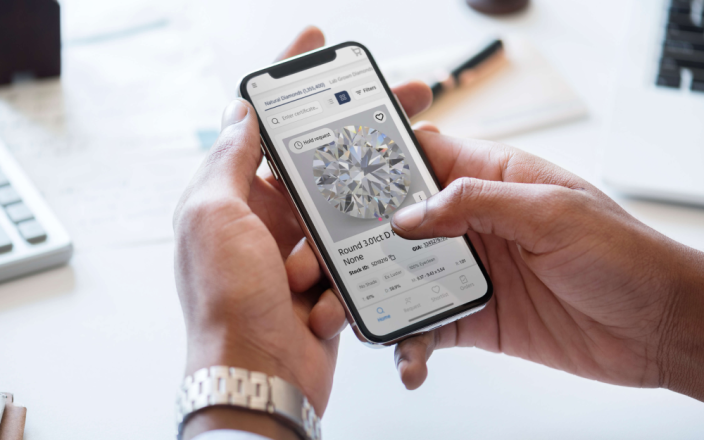Recently, I hosted a guest from the diamond jewellery space from overseas. He was curious to see how Australian retailers operate because it’s known in all primary global diamond trading centres that the typical Australian jewellery retailer can get a higher premium for their goods.
My colleague decided to blind shop several retailers to see and hear how they sell diamond engagement rings. Overall, he appreciated the different approaches and was impressed by several showrooms and retail operations. In his opinion, it was quite different to anywhere else globally. However, he was shocked by some of the responses, and so was I when he repeated to me what was said.
When asked, “What is the difference between natural and lab-grown diamonds?” a salesperson from a very well-known diamond retailer said, “Well, natural diamonds kill people!” My colleague responded, “Really?” The salesperson said, “You remember that movie Blood Diamond? The miners kill people.” This response shocked my colleague and I.
Another highly reputable jeweller suggested that the reason why they only use GIA certificates is because it guarantees that the diamond is not a blood diamond. Another classic sentiment he heard is that there is no higher cut of the GIA Triple X—the only comparable is the IGI Ideal. This retailer most likely sells a lot of lab-grown diamonds. When asked, “What is the difference between natural and lab-grown diamonds?” The jeweller said, “There is no difference. Save your money and buy a lab-grown diamond.”
Another retailer, when asked where their diamonds come from, they said, “De Beers, of course.” When asked, “How do I know that these diamonds don’t come from Russia?“ They said, “No, because they come from De Beers. You know De Beers is a place, right?” God help me. In this interaction, there was a second question on natural diamonds. The salesperson said, “If you want a bigger diamond, and one that is more ethical, you should choose a lab-grown diamond.”
Despite these anecdotes, there were some positive moments shared. The majority of staff were friendly. Some spent considerable time explaining the different qualities of diamonds and were exceptionally balanced with the pros and cons of natural and lab-grown.
In many cases, it was an easy discussion on what might suit him, focusing on if he wants a larger size with a smaller budget, then lab-grown is a good option. Some retailers he visited put a massive emphasis and effort into design and sketching, many had grand fit-outs, and in general, 90 percent were very engaging.
This feedback tells us that some, and hopefully, only a few, who sell diamond rings in Australia have relied on the general diamond industry to provide the consumer with the majority of knowledge, and whatever rubbed off on the salesperson was sufficient. The owners of these businesses may not have spent time educating their salespeople. Maybe they haven’t even listened to the salesperson’s pitch. With the markups and ease of selling lab-grown diamonds, when comparing the two visually, they may have thought, “Who needs to teach anyone anything?”
Those who made those shocking comments have been allowed to say whatever they want, and hopefully, the consumer is not well informed and doesn’t question too many of the answers given to them.
There is some excellent material from the Natural Diamond Council that retailers could share with their team to provide them with short answers that are honest, transparent, and still enable the customer to choose what suits them best.
Retailers who have chosen to focus on lab-grown have done, and continue to do, exceptionally well regarding margins. The market is becoming more competitive. It will be interesting to see how this market evolves and where lab-grown prices will find their permanent position.
An interesting example is that a customer who purchased a six-carat lab-grown diamond two years ago for $62,000 may now see the same stone in the same ring for $21,000, and we all know what an excellent markup that still is. I have no doubt this will become a conversation retailers will need to prepare for. The best thing you can do for your customers is to ensure your teams are well-equipped with the knowledge they need to assist them clearly, openly, and honestly.

Trade well,
Rami Baron
President, Diamond Dealers Club Australia
rami@ddca.org.au


